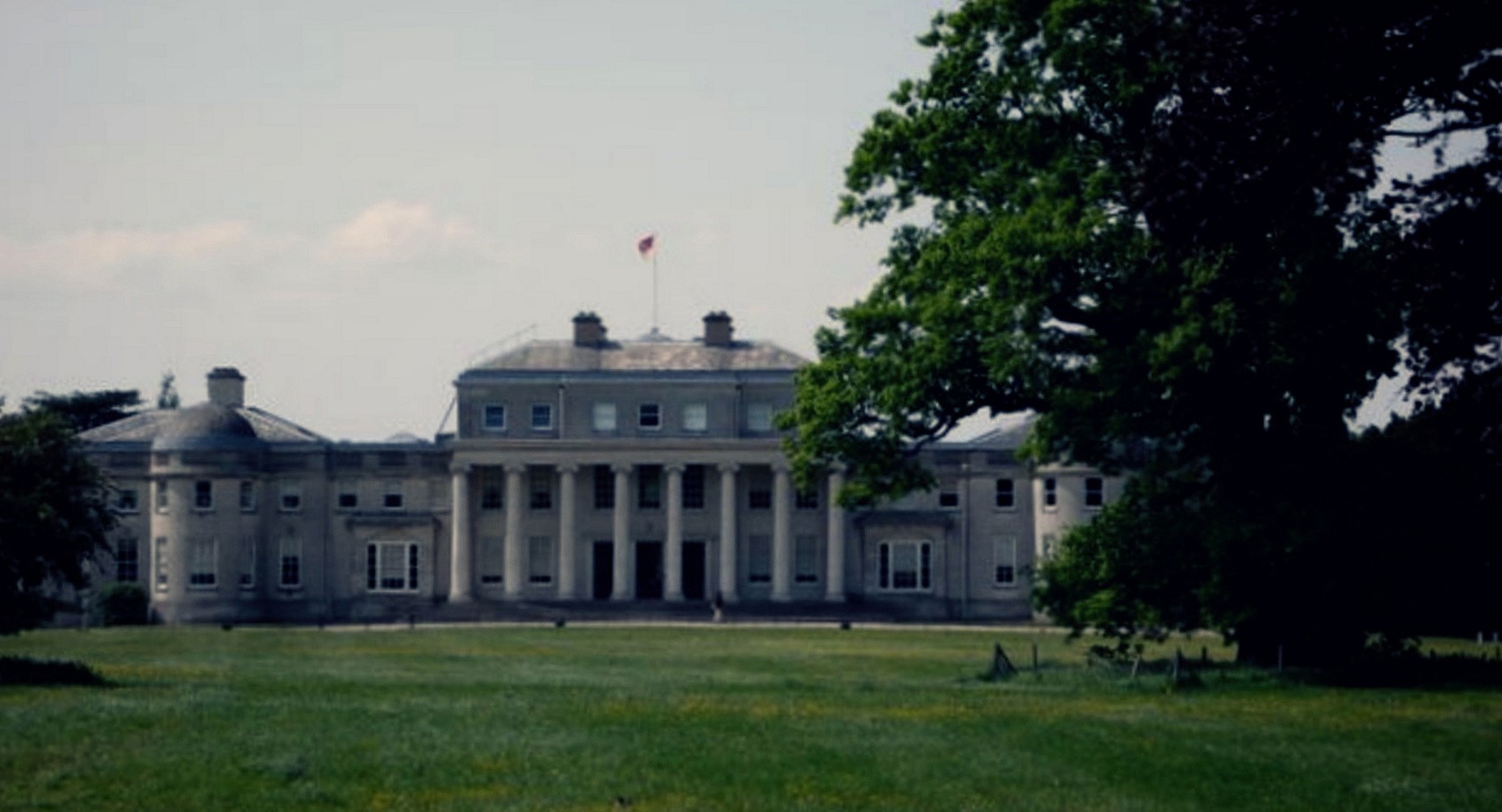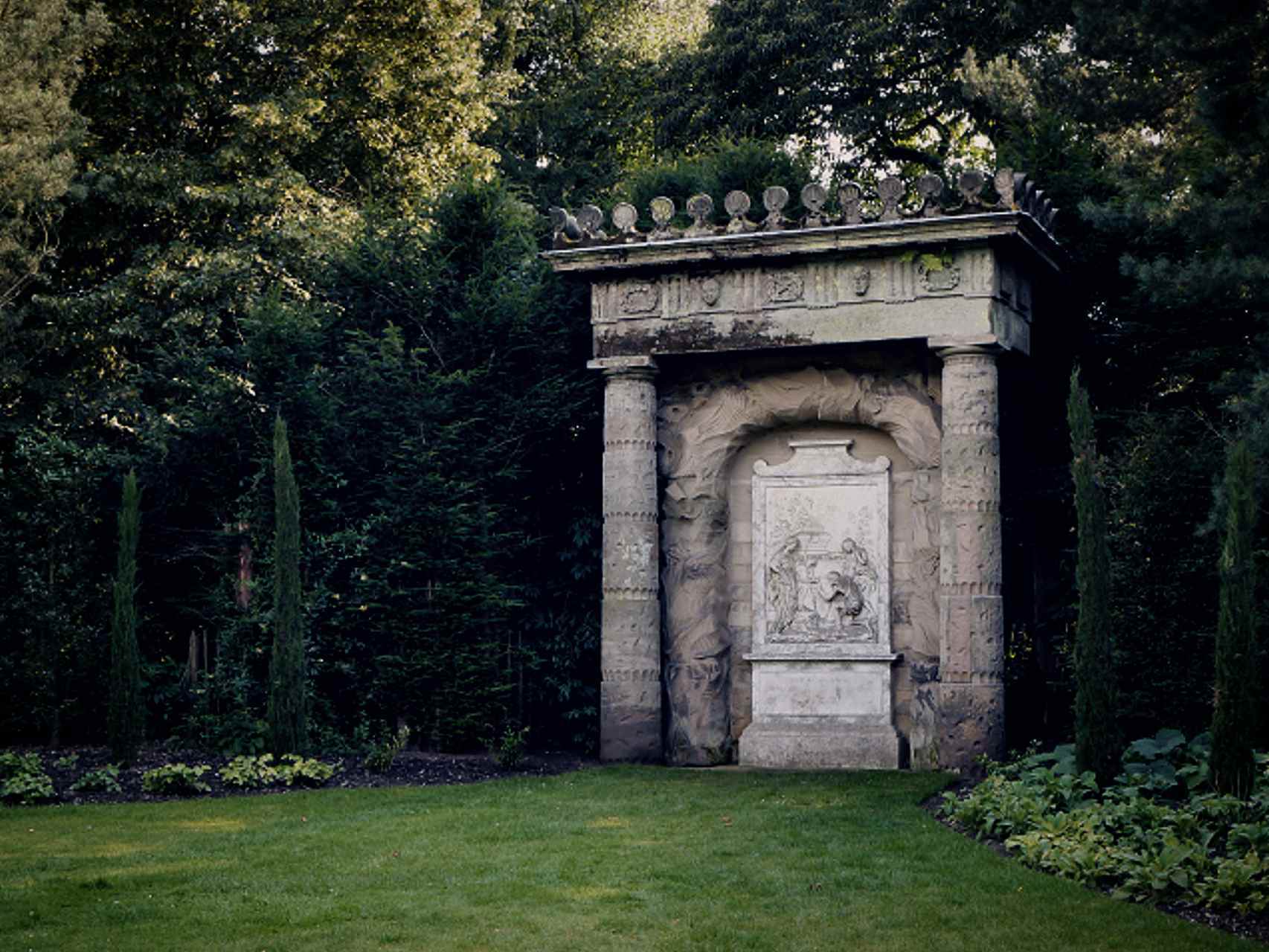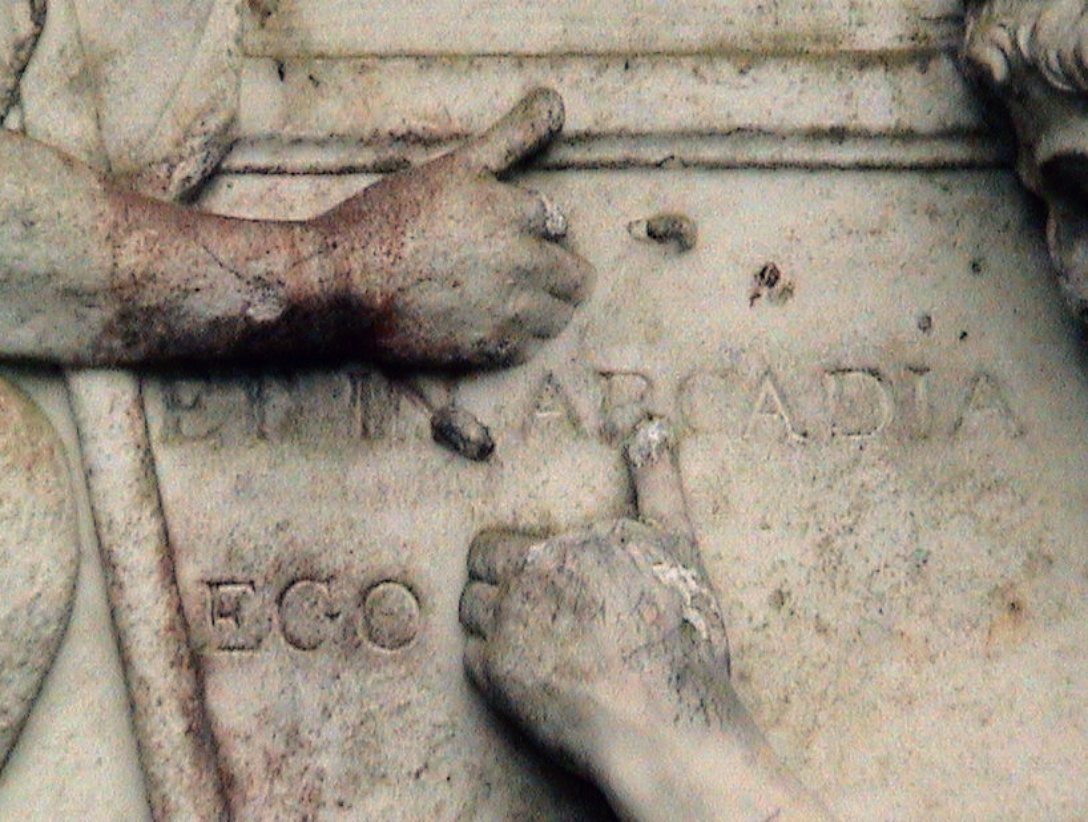The Shugborough Inscription is a sequence of letters, O U O S V A V V, located in the center of the letters D and M carved into the 18th century Shepherd’s Monument, in the grounds of Shugborough Hall, Staffordshire, England, below a picture of Mirror painting of the Shepherds of Arcadia, by Nicolas Poussin.

To this day, these letters never been satisfactorily explained, and it has been called one of the best undeciphered ciphertexts in the world. The inscription became widely known after being mentioned in the 1982 book, The Holy Blood and the Holy Grail, by Michael Baigent, Richard Leigh and Henry Lincoln.
The Monument Ar Shugborough
The monument was built between 1748 and 1763, commissioned by Thomas Anson, paid for by his brother, Admiral George Anson, and decorated by the Flemish sculptor Pedro Scheemakers. The relief copy of Poussin’s painting is contained within an arch, rustic, and shows a woman and three shepherds, two of whom are pointing at a grave.

In the tomb there is sculpted the Latin text ET IN ARCADIA EGO, meaning “I am also in Arcadia”. The engraving shows a number of minor modifications compared to the original painting, as well as a sarcophagus that has been placed in the main tomb.
Above Poussin’s scene are two stone heads, first one showing a bald man smiling, the other with goat-like horns, bearing a resemblance to the Greek god Pan.

Below the relief carving on the monument, an unknown craftsman carved the mysterious eight letters, O U O S V A V V, listed between the letters D and M. In Roman tombs, the letters D M, commonly represented Dis Manibus, meaning “dedicated to the shadows”.

Theories Behind The Undeciphered Shugborough Inscription
In recent decades, investigators have proposed several possible solutions. Despite the many theories, staff at Shugborough Hall remain sceptical of all proposed solutions. A spokesman for the property (now owned by the National Trust) was quoted in 2014 asserting, “We get five or six people a week who believe they have solved the code so we are a bit wary of them now.”
Latin Initialism Theories
One suggestion is that the eight letters are a coded dedication by George Anson to his deceased wife. In 1951 Oliver Stonor speculated that the letters might be an initialism for the Latin phrase Optimae Uxoris Optimae Sororis Viduus Amantissimus Vovit Virtutibus ― “Best of wives, Best of sisters, a most devoted Widower dedicates (this) to your virtues”. This was the solution favoured by former Bletchley Park employee Shiela Lawn. It has been pointed out, however, that the grammar of this sentence is incorrect, and that abbreviations following Latin rules cannot be expanded arbitrarily.
Steve Regimbal interprets the letters as standing for a new Latin translation of the phrase “Vanity of vanities, saith the preacher; all is vanity.” (Ecclesiastes 12:8), namely Orator Ut Omnia Sunt Vanitas Ait Vanitas Vanitatum. He has speculated that the phrase may be the source of the earlier inscription “OMNIA VANITAS” which may have been carved on an alcove at the estate of one of Thomas Anson’s associates, George Lyttleton.
Former NSA linguist Keith Massey interprets the letters as an initialism for the Latin phrase Oro Ut Omnes Sequantur Viam Ad Veram Vitam ― “I pray that all may follow the Way to True Life” ― in reference to the Biblical verse John 14:6, Ego sum Via et Veritas et Vita ― “I am the Way, the Truth and the Life”.
Cypher Theories
Dave Ramsden (2014) suggests that the monument be understood as a funerary altar, dedicated to a syncretic female figure known as the “Shepherdess”. He interprets the eight-letter inscription as a polyalphabetic cipher used to encrypt the name “Magdalen”.
George Edmunds in his book Anson’s Gold (2016) proposed a cypher encoding the latitude and longitude of an island where Admiral George Anson, Thomas Anson’s brother, had buried Spanish treasure. Anson mounted a secret expedition to recover this treasure, which was located but due to unforeseen circumstances remains in place. According to Edmunds, Anson received letters in code sent by the expedition leader which include part aof the cipher.
English Initialism Theories
Violet Margaret Anson, Countess of Lichfield (1899-1988), suggested that the monument was built by Admiral Anson as a memorial to his wife. She thought that the inscription referred to a poem that related a story of a Shepherdess, Alicia, who lived on one of the hills of Rome and helped convert pagans to Christianity. In this theory, the initialism referring to the lines Out Your Own Sweet Vale, Alicia, Vanishes Vanity. Twixt Deity and Man Thou, Shepherdess, The Way, but no source for these words has ever been traced.
A. J. Morton, writer and researcher specializing in the history of the west coast of Scotland, observes that some of the letters match the names of the residents of Shugborough in the early 19th century, and believes that the inscription denotes the words Orgreave United with Overley and Shugborough, Viscount Anson Venables Vernon.



